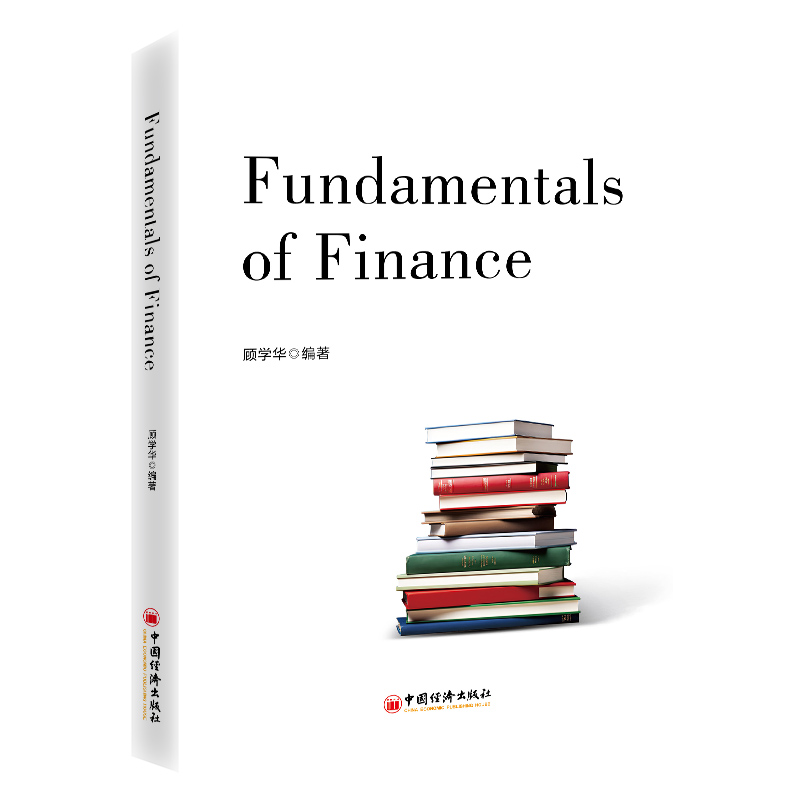- ISBN:9787513678551
- 装帧:平装-胶订
- 册数:暂无
- 重量:暂无
- 开本:16开
- 页数:260
- 出版时间:2024-08-01
- 条形码:9787513678551 ; 978-7-5136-7855-1
本书特色
·适合国内金融专业及工商管理类本科生、研究生以及外语类专业学生跨专业复合学习 ;
·可供来华本科、研究生留学生选学之用。
内容简介
了解金融学的基本原理是金融活动的基础,它们在金融市场的运作中起着至关重要的作用。市场投资者在进行投资决策时,需要遵循这些原则,以实现投资的*大化。同时,金融市场也需要建立健全的制度,确保市场的公开透明和供求关系的平衡。本课程《金融学基础》的国际化特色鲜明,同时兼具中国金融发展的国情特色,具有较高的学习价值。本课程主要涉及以下的内容:1、时间价值原理;2风险与收益的平衡原则;3、多元化原则;4. 信息透明和信息披露的重要性原则; 5.市场供求关系原则;6.金融与货币市场;7.企业融资手段;8.固定收益证劵估值;9.股票估值等。本课程适合金融专业本科生、工商管理类本科生、研究生、外语类专业学生跨专业复合学习,来华留本科研究生学生的选用学习之用。
目录
1.0 Introduction 12
1.1 Capital Market 16
1.1.1 The Definition of Capital Market 16
1.1.2 The Role of Capital Market 16
1.1.3 Primary Market vs Secondary Market 17
1.2 Participants in a Capital Market 18
1.2.1 Financial Intermediaries 18
1.2.2 Financial Institutions 20
1.2.3 Broker-Dealer 21
1.3 Business Organisations and Physical Assets Market 22
1.4 Chinese Capital Market: An Introduction 24
1.4.1 Shanghai Stock Exchange (SSE) 25
1.4.2 The STAR Market 26
1.4.3 The Shen Zhen Stock Exchange (SZSE) 27
1.4.4 Beijing Stock Exchange (BJSE) 29
1.5 Share Classes and Securities in China 29
1.6 Capital Market Analyst Approach 35
Conclusion 36
Exercises 38
Chapter 2 Money and Money Market 45
2.0 Introduction 45
2.0.1 Checks/Cheques 46
2.0.2 Legal Tender 47
2.0.3 Barter 49
2.1 Historical Development of Money 49
2.1.1 Origins of Money 49
2.1.2 Token Money 51
2.1.3 Money Development in China 52
2.2 The Essential Qualities of Money 53
2.3 The Functions of Money 54
2.4 Defining Money in a Broader Sense 55
2.4.1 Money Convertibility 55
2.4.2 Money Defined in Theory 56
2.4.3 Money Defined in Macroeconomics 57
2.4.4 Money Defined by Money Supply 58
2.5 Money Market 59
2.5.1 The Bill Market 60
2.5.2 Inter-bank (Lending) Market 61
2.5.3 Certificates of Deposit Market 62
Conclusion 63
Exercise 63
Chapter 3 Basic Concepts and Theories in Finance 69
3.0 Introduction 69
3.1 Theory of Managerial Self-Interest 71
3.2 The Concept of Agency 74
3.3 The Concept of ‘Time Value of Money’ 78
3.3.1 Single Interest Rate 79
3.3.2 Compound Interest Rate 81
3.4 The Concept of Maximising Shareholders’ Wealth 83
3.5 Risk Diversification and Risk Aversion 84
3.5.1 Systemic Risk or Market Risk 85
3.5.2 Risk-Aversion Theory 88
3.6 Information Asymmetry and Financial Signalling 89
3.6.1 Information Asymmetry 89
3.6.2 The Financial Signalling Theory 90
3.7 The Capital Market Efficiency Theory 91
Conclusion 92
Exercises 92
Chapter 4 Business Source of Finance 97
4.0 Introduction 97
4.1 Business Structure 98
4.1.1 Sole Proprietor 99
4.1.2 Partnership 100
4.1.3 Unincorporated vs. Incorporated Business 101
4.2 Equity Finance 102
4.2.1 Ordinary Share 102
4.2.2 Preference Shares 104
4.3 Debt Finance 105
4.3.1 Types of Corporate Debt 105
4.3.2 Interest Coupon Rate 107
4.4 Convertible Securities and Warrants 108
4.5 International Sources of Finance 109
4.6 Alternative Sources of Finance 110
Conclusion 110
Exercises 112
Chapter 5 Time Value of Money 117
5.0 Introduction 117
5.1 Future Value 118
5.2.1 The concept of future value
5.2.2 Future Value Table 119
5.2.3 The Use of Future Value 120
5.3 Present Value 123
5.4 Annuities 125
5.5 Perpetuity 129
5.6 Real and Nominal Rates of Interest 132
Conclusion 134
Exercises 135
Chapter 6 Fixed-Interest Securities and Valuations 145
6.0 Introduction 145
6.1 What is Value? 146
6.1.1 Book Value 147
6.1.2 Market Value 149
6.1.3 Forced-Sale Value 150
6.2 Government Bond Valuation 151
6.2.1 Risks Associated with Government Bonds 152
6.2.3 Calculating Market Value After an Unexpected Change in Interest Rates 154
6.3 Bond Yields 156
6.3.1 Interest (Current) Yield 156
6.3.2. Yield to Maturity (YTM) 156
6.3.3 The Valuation of Undated Government Bonds 158
6.4 Corporate Bond 160
6.4.1 Risks Associated with Debentures and Loan Stock 161
6.4.2 Further Explanation of Default Risk Premium 166
6.4.3 China Government Bond Index 168
6.5 An Introduction to Yield Curves 169
6.5.1 Introduction to Yield Curves 169
6.5.2 Positive Yield Curve 171
6.5.3 Inverted Yield Curve 172
6.5.4 Flat Yield Curve 172
Conclusion 173
Exercises 174
Chapter 7 Ordinary Share Valuation 179
7.0 Introduction 179
7.1 Information and Equity Value 181
7.2 Valuing Ordinary Shares 182
7.2.1 Absolute valuation 183
7.2.2 Relative valuation 183
7.2.3 Factors that affect the value of ordinary shares 184
7.3 Equity Valuation Models 185
7.3.1 Asset-based valuation 186
7.3.2 Income-based valuation model 188
7.3.4 Discounted cash flow-based valuation (DCFV) 195
7.4 Conclusion 199
Exercises 200
Chapter 8 Stock Market Investment Indicators 201
8.0 Introduction 201
8.1 Measuring Risks and Returns 202
8.1.1 Expected Return 203
8.1.2 Variance and standard deviation 204
8.1.3 Introduction to some technical indicators 208
8.2 Financial Ratio Analysis 214
8.2.1 Price/Earnings (P/E) Ratio 215
8.2.2 Earning Yield 216
8.2.3 Earning Yield Vs. P/E ratio 217
8.2.4 Dividend yield 218
8.2.4 Dividend Coverage Ratio (DCR) 219
8.2.5 Solvency ratio (Gearing) 220
8.2.6 Profitability ratios 221
8.2.7 Working capital management ratios 222
8.2.8 Liquidity ratio 223
8.3 Comprehensive Examples 223
8.3.1 Stock Market Performance Analysis 223
8.3.2 Financial Ratios Analysis and a Comparison of Two Companies in the Same Industry 224
8.3.4 FRA in action 228
Conclusion 233
Exercises 235
Chapter 9 Strategic Financial Management 240
9.0 Introduction 240
9.1 Business Finance 241
9.2 Finance in Non-profit Organisations (NPOs) 243
9.3 The Concept of Value, Revisited 245
9.4 Strategic Financial Management 247
9.5 Investment Decisions 249
9.6 Financing Decisions 250
Keys to Exercises
References 254
作者简介
顾学华,男,1978年出生,先后毕业于英国诺森比亚大学、法国皮埃尔蒙代斯大学、法国格勒诺布尔大学,先后获得国际金融与会计文学学士学位、财务管理硕士学位、理学硕士学位、管理科学博士学位,现为北京第二外国语学院商学院副教授,长期从事国际教育教学、科学研究以及来华留学生教育教学工作,先后获得上海财经大学优秀教师奖、法国外交部埃菲尔奖学金(Eiffel Scholarship)、法国伊泽尔省罗阿大区管理科学研究奖学金,曾担任2010年上海世博会英语培训咨询专家;讲授的本科、硕士研究生课程有公司金融、国际营销、统计学、管理会计、管理学研究方法、SAS金融编程导论等。
-

底层逻辑:看清这个世界的底牌
¥29.7¥69.0 -

文案高手
¥12.6¥36.0 -

广告, 艰难的说服--广告对美国社会影响的不确定性
¥7.3¥27.0 -

富爸爸穷爸爸
¥32.0¥89.0 -

故事力法则
¥16.8¥48.0 -

图解博弈论
¥13.3¥38.0 -

NO LOGO-颠覆品牌全球统治
¥9.5¥45.0 -

学会提问
¥46.2¥69.0 -

央企真相
¥18.6¥58.0 -

冯唐成事心法
¥42.9¥78.0 -

麦肯锡高效工作法(八品)
¥13.5¥52.0 -

(平装)哈佛管理课
¥14.4¥45.0 -

掌控习惯:如何养成好习惯并戒除坏习惯
¥36.5¥58.0 -

畅销的原理:为什么好观念、好产品会一炮而红?(八品)
¥15.8¥45.0 -

投资人和你想的不一样
¥20.8¥65.0 -

狼道
¥9.1¥35.0 -

可复制的领导力
¥24.0¥49.0 -

中国的银行
¥9.9¥17.0 -

麦肯锡底层领导力/(英)克劳迪奥·费泽,(英)迈克尔·伦尼,(英)尼古莱·陈·尼尔森
¥21.8¥68.0 -

麦肯锡图表工作法
¥24.4¥49.8












